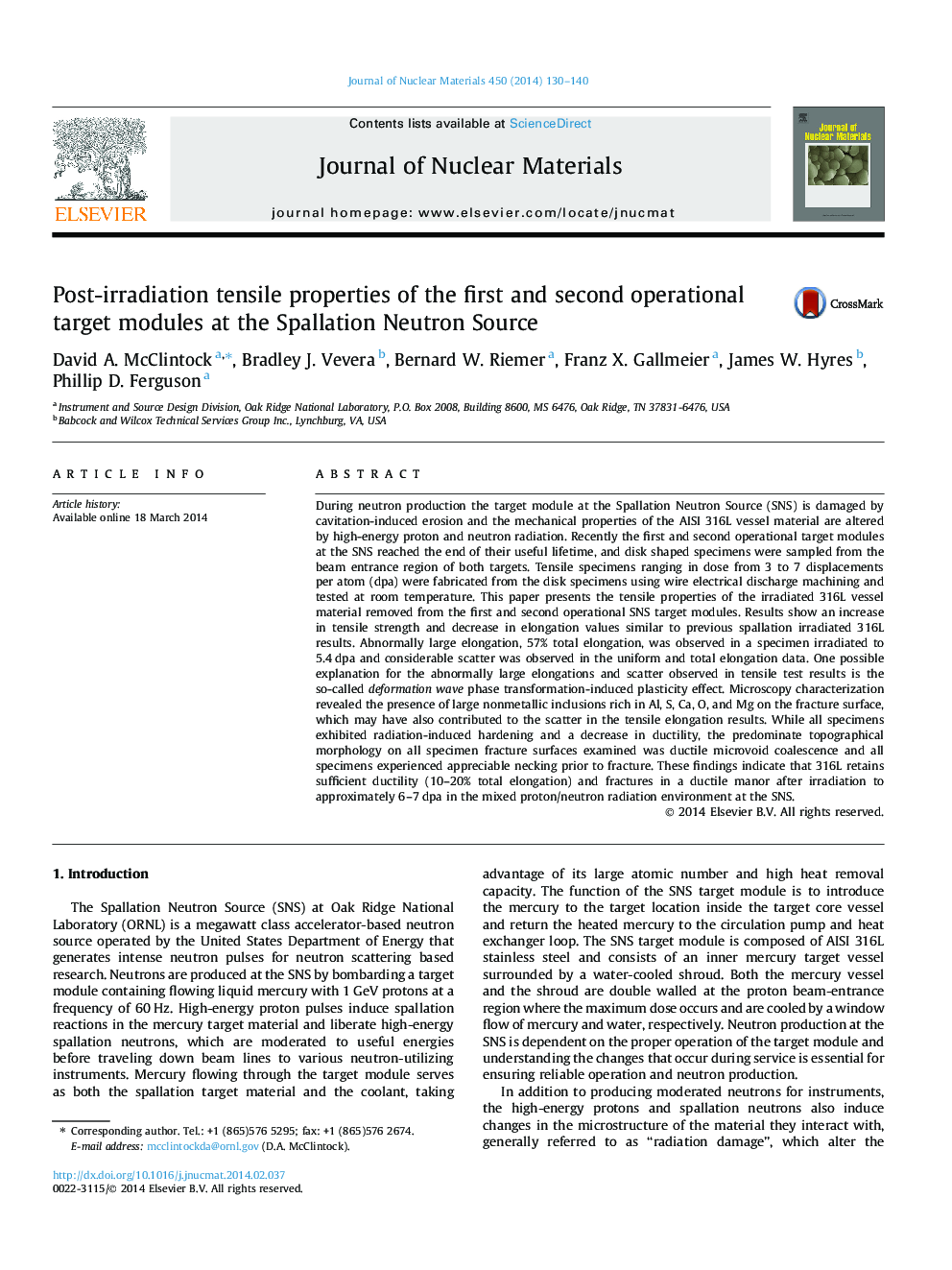| کد مقاله | کد نشریه | سال انتشار | مقاله انگلیسی | نسخه تمام متن |
|---|---|---|---|---|
| 1565185 | 1514195 | 2014 | 11 صفحه PDF | دانلود رایگان |
عنوان انگلیسی مقاله ISI
Post-irradiation tensile properties of the first and second operational target modules at the Spallation Neutron Source
ترجمه فارسی عنوان
خواص کششی پس از اشعه ماژول هدف اول و دوم در منبع ناپایدای اسپالیتی
دانلود مقاله + سفارش ترجمه
دانلود مقاله ISI انگلیسی
رایگان برای ایرانیان
موضوعات مرتبط
مهندسی و علوم پایه
مهندسی انرژی
انرژی هسته ای و مهندسی
چکیده انگلیسی
During neutron production the target module at the Spallation Neutron Source (SNS) is damaged by cavitation-induced erosion and the mechanical properties of the AISI 316L vessel material are altered by high-energy proton and neutron radiation. Recently the first and second operational target modules at the SNS reached the end of their useful lifetime, and disk shaped specimens were sampled from the beam entrance region of both targets. Tensile specimens ranging in dose from 3 to 7 displacements per atom (dpa) were fabricated from the disk specimens using wire electrical discharge machining and tested at room temperature. This paper presents the tensile properties of the irradiated 316L vessel material removed from the first and second operational SNS target modules. Results show an increase in tensile strength and decrease in elongation values similar to previous spallation irradiated 316L results. Abnormally large elongation, 57% total elongation, was observed in a specimen irradiated to 5.4Â dpa and considerable scatter was observed in the uniform and total elongation data. One possible explanation for the abnormally large elongations and scatter observed in tensile test results is the so-called deformation wave phase transformation-induced plasticity effect. Microscopy characterization revealed the presence of large nonmetallic inclusions rich in Al, S, Ca, O, and Mg on the fracture surface, which may have also contributed to the scatter in the tensile elongation results. While all specimens exhibited radiation-induced hardening and a decrease in ductility, the predominate topographical morphology on all specimen fracture surfaces examined was ductile microvoid coalescence and all specimens experienced appreciable necking prior to fracture. These findings indicate that 316L retains sufficient ductility (10-20% total elongation) and fractures in a ductile manor after irradiation to approximately 6-7Â dpa in the mixed proton/neutron radiation environment at the SNS.
ناشر
Database: Elsevier - ScienceDirect (ساینس دایرکت)
Journal: Journal of Nuclear Materials - Volume 450, Issues 1â3, July 2014, Pages 130-140
Journal: Journal of Nuclear Materials - Volume 450, Issues 1â3, July 2014, Pages 130-140
نویسندگان
David A. McClintock, Bradley J. Vevera, Bernard W. Riemer, Franz X. Gallmeier, James W. Hyres, Phillip D. Ferguson,
